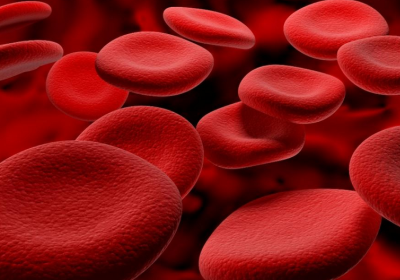
Rising Geriatric Population Anticipated to Fuel Growth of the Global Anticoagulation Market at a CAGR of 7.80% during Forecast Period of 2020 to 2027
The anticoagulation market is expected to register a CAGR of 7.80% during the forecast period 2020-2027, to reach USD 31,696.59 million by 2027.
key players in the global anticoagulation market—Pfizer Inc (US), Sanofi (France), Novartis AG (Switzerland), GlaxoSmithKline plc (UK), Daiichi Sankyo Company, Limited, Inc. (Japan), Johnson & Johnson Services Inc (US), Boehringer Ingelheim International GmbH (Germany), Bristol-Myers Squibb Company (US), F. Hoffmann-La Roche Ltd (Switzerland), and Portola Pharmaceuticals, Inc(US).
Market Highlights
The global anticoagulation market is expected to have a market value of USD 31,696.59million by 2027.
Anticoagulants are medications that reduce blood clots and reduce the risk of serious health conditions such as heart attack, diabetes, and others. Blood clots formation occurs due to platelets sticking together and proteins in the blood combining to form a solid mass.In addition,some of the common examples of such drugs include apixaban (Eliquis), dabigatran (Pradaxa), edoxaban (Lixiana), rivaroxaban (Xarelto), and warfarin (Coumadin).The growth of the global anticoagulation market is driven by the factors such as the increasing prevalence of venous thromboembolism (VTE) and cardiovascular disorders. In addition, the growing adoption of novel oral anticoagulants (NOACs), the increase in the number of obese and elderly populations, the increasing demand for anticoagulants, and the surge in demand for novel therapeutics are also expected to boost the market growth.However, the high price of NOACs and lack of antidots for NOACs are likely to restrain the market growth.
Segment Analysis
The global anticoagulation market is segmented into drug class, route of administration, disease indication, distribution channel, and region. The drug class segment has been further segmented into direct oral anticoagulants (DOACs), warfarin,vitamin K, and heparins&Low Molecular Weight Heparin (LMWH). The disease indication segment is further segmented into heart attacks,stroke, Deep Vein Thrombosis (DVT)/Pulmonary Embolism (PE), Mechanical Heart Valves (MHV), and others. The route of administration segment has been further segmented into oral, injectable, and others.The distribution channel segment is segmented into retail pharmacies, hospital pharmacies, and online pharmacies.
Regional Analysis
The global anticoagulation market, based on region, has been divided into North America, Europe, Asia-Pacific, and the Rest of the World.
The North American market accounted for the largest share in 2019 and is expected to increase at a CAGR of 8.20% during the forecast period. This is due to the rising prevalence of venous thromboembolism (VTE) and cardiovascular disorders, increased risk of a blood clot in various medical conditions, and the adoption of NOACs globally. According to a published article in PubMed in 2019, NOACs have emerged as promising alternatives to Vitamin K Antagonists (VKAs). However, there are some considerations and challenges to their introduction in developing countries.
Europe accounted for a market size of USD 5,205.37million in 2019 and is expected to show a CAGR of 7.26% during the forecast period. It has evolved as a prominent market with increased cardiovascular diseases and rising investments in R&D in the pharmaceutical sector. The region has considerable growth potentials that would help expand the global market in the coming years. However, stringent regulations set by various governments are hampering the market growth in the European region.
The anticoagulation market in Asia-Pacific has been segmented into China, India, Japan, South Korea, Australia, and the Rest of Asia-Pacific. Asia-Pacific is expected to show the highest growth rate during the forecast period from 2020 to 2027. Factors such as an increasing patient population suffering from various chronic and acute diseases, rising prevalence of cardiovascular disease and VTE, developing economies, improving diagnosis rate, and growing demand for ideal therapeutics are anticipated to boost the market growth. Furthermore, continuous economic development with evolving healthcare infrastructure and improving healthcare awareness have further supported the market’s growth. However, increasing treatment expenditure for anticoagulant drugs is anticipated to hamper the market growth in the Asia-Pacific region.
The Rest of the World is segmented into the Middle East, Africa, and Latin America. The Middle East & Africa region market is expected to witness significant growth due to the increasing number of research companies and subsidiaries involved in R&D activities for anticoagulants.The rising prevalence of cardiovascular disorders in the region is also influencing the growth of the anticoagulation market.
Key Findings of the Study.
-
- The global anticoagulation market is estimated to reach USD 31,696.59 million by 2027 at a CAGR of 7.80% during the assessment period of 2020 to 2027.
-
- North America accounted for the highest share of the global anticoagulation market in 2019 due to prominent players in the US and a rise in the number of patients with coronary artery disease in the US. According to the American Heart Association (AHA) report, nearly 1 in 7 patients death occurred in the US due to stroke.
-
- Based on drug class, the direct oral anticoagulants segment accounted for the largest market share of 65.25% in 2019.
-
- On the basis of disease indication, the highest share of 28.6% was held by the heart attack segment and is predicted to be the fastest-growing during the forecast period at a CAGR of 9.05%.
-
- On the basis of the administration route, the oral segment held the highest share of 75.7% in 2019, with the highest CAGR of 8.62% during the study period.
-
- Based on the distribution channel, the online pharmacies segment is projected to exhibit the highest CAGR of 6.86% during the study period.
-
- Some of the key players operating in the anticoagulation market are Pfizer Inc (US), Sanofi (France), Novartis AG (Switzerland), GlaxoSmithKline plc (UK), Daiichi Sankyo Company, Limited, Inc. (Japan), Johnson & Johnson Services Inc (US), Boehringer Ingelheim International GmbH (Germany), Bristol-Myers Squibb Company (US), F. Hoffmann-La Roche Ltd (Switzerland), and Portola Pharmaceuticals, Inc (US).
